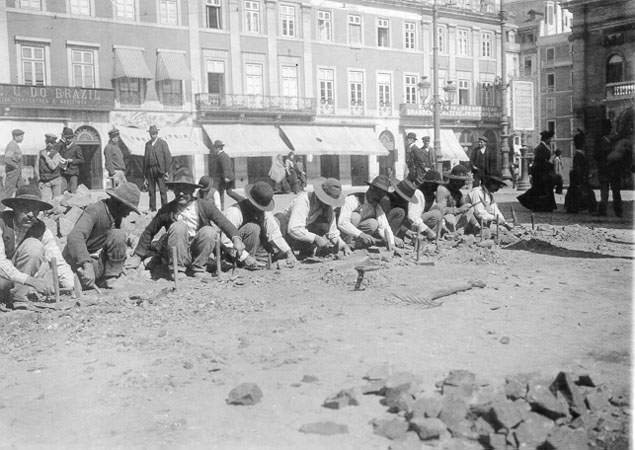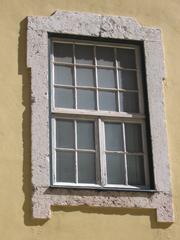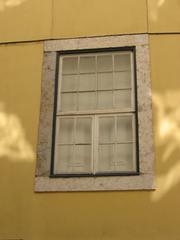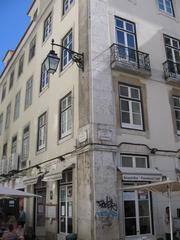
Lisbon Baixa Visiting Guide: Hours, Tickets, and Things to Do in Lisbon, Portugal
Date: 14/06/2025
Introduction: Baixa’s Heritage and Significance
Baixa, located at the heart of Lisbon, stands as a symbol of resilience, urban innovation, and cultural vibrancy. After the devastating 1755 earthquake, the district was meticulously rebuilt under the direction of the Marquis of Pombal, introducing pioneering urban planning and earthquake-resistant architecture. Today, Baixa’s elegant squares—such as Praça do Comércio and Rossio—along with landmarks like the Arco da Rua Augusta and the Elevador de Santa Justa, offer both historical depth and modern city life. This comprehensive guide covers Baixa’s history, must-see sights, ticketing and access information, travel tips, and how to make the most of your visit. For an in-depth look at Baixa’s significance, consult resources such as Lisbon Guide, Travel in Portugal, and World History Journal.
Table of Contents
- Baixa’s Origins and Historical Development
- The 1755 Earthquake and Pombaline Reconstruction
- Urban Layout and Notable Landmarks
- Social and Economic Role
- Baixa Today: Culture and Events
- Visitor Information: Hours, Tickets, and Accessibility
- Top Attractions: Visiting Hours and Tips
- Getting Around & Practical Guidance
- Frequently Asked Questions (FAQ)
- Sustainable Tourism and Visitor Etiquette
- References
Baixa’s Origins and Historical Development
Prior to the mid-18th century, Baixa was the commercial and administrative core of Lisbon. Its medieval street plan—comprised of narrow, winding alleys—was a bustling hub for merchants, artisans, and traders benefiting from proximity to the Tagus River (Lisbon Guide).
The 1755 Earthquake & Pombaline Rebuilding
On November 1, 1755, a massive earthquake, tsunami, and fires destroyed much of Lisbon, with Baixa suffering near-total devastation. The tragedy spurred an ambitious rebuilding effort, led by the Marquis of Pombal, which embraced Enlightenment ideals. The new Baixa was designed on a rational, grid-based plan—one of Europe’s earliest examples of modern urban planning (Spotting History; Lisbon Tourist Information).
Architectural Innovations
The Pombaline style introduced groundbreaking features:
- Earthquake-resistant “Pombaline cage”: A wooden lattice structure absorbed seismic shocks (Spotting History).
- Fire prevention: Raised inter-terrace walls helped contain fires.
- Uniformity: Standardized facades and heights created a harmonious streetscape.
Urban Layout and Notable Landmarks
Baixa’s grid covers roughly 236,000 square meters, structured around major squares and broad avenues.
Key Plazas
- Praça do Comércio: Lisbon’s grand riverside square, former royal palace site, and symbol of the city’s maritime power (Travel in Portugal).
- Praça da Figueira: Commercial hub and transport nexus.
- Rossio (Praça Dom Pedro IV): The city’s traditional gathering spot with iconic black-and-white mosaic pavements.
Iconic Landmarks
- Arco da Rua Augusta: Triumphal arch with rooftop views, commemorating the city’s rebirth.
- Elevador de Santa Justa: Neo-Gothic iron lift connecting Baixa to Bairro Alto (Travel in Portugal).
- MUDE (Design Museum): Celebrating design and fashion in a restored Pombaline building.
- Livraria Bertrand: The world’s oldest operating bookstore.
Social and Economic Role
Baixa’s reconstruction established it as the epicenter of commerce, administration, and civic life. Its wide boulevards and uniform buildings remain home to banks, shops, and historic cafés, reflecting Enlightenment ideals of accessibility and community (Lisbon Tourist Information).
Baixa Today: Culture and Events
Baixa thrives as Lisbon’s vibrant downtown, blending history with modern commerce. Annual events like the Festas dos Santos Populares fill the streets with music and festivities every June (Lisbon Explorers). The district is on Portugal’s tentative list for UNESCO World Heritage status (Spotting History).
Visitor Information: Hours, Tickets, and Accessibility
- District Access: Baixa’s streets and squares are open 24/7.
- Key Attractions:
- Elevador de Santa Justa: 7:00–23:00; €5.30/ride (free with Lisboa Card).
- Arco da Rua Augusta: 9:30–19:00; €3.50.
- MUDE: Tue–Sun, 10:00–18:00; €5 (free for EU citizens under 25).
- Praça do Comércio: Open all day; free.
- Public Transport: Easily reached via Baixa-Chiado metro, tram lines 28 & 15, and several bus routes.
- Accessibility: Flat, paved streets and step-free access at major sites; the Santa Justa Lift is wheelchair-accessible. Some older buildings may pose challenges.
- Guided Tours: Walking tours (history, architecture, gastronomy) are widely available; book in advance during peak season.
Top Attractions: Visiting Hours and Tips
Praça do Comércio
- Open 24 hours; cafés and shops open 10:00–20:00.
Santa Justa Lift
- 7:00–23:00; €5.30 (free with Lisboa Card).
Arco da Rua Augusta
- 9:30–19:00; €3.50. Rooftop platform offers panoramic views.
MUDE (Design Museum)
- Tue–Sun, 10:00–18:00; €5.
Livraria Bertrand
- Mon–Sat, 10:00–19:30; free entry.
Time Out Market
- 10:00–00:00 daily; features food stalls by top Lisbon chefs.
Glória Funicular
- 7:00–23:00; public transport fare applies.
Casa dos Bicos (José Saramago Foundation)
- Tue–Sun, 10:00–18:00; free admission.
Avenida da Liberdade
- Shops/cafés: 10:00–20:00.
Tips:
- Buy attraction tickets online to avoid queues.
- Visit early or late for fewer crowds and better photo opportunities.
Getting Around & Practical Guidance
- Best explored on foot: Flat layout and pedestrianized streets.
- Metro/Trams: Baixa-Chiado, Rossio, and Restauradores stations connect to the city.
- Lisboa Card: Recommended for unlimited public transport and attraction discounts (BeeLovedCity).
- Accessibility: Wheelchair-friendly metro stations and elevators; some cobblestones may be tricky after rain.
- Dining: Seek local favorites; avoid tourist traps with photo menus or aggressive touts (Time Out).
Frequently Asked Questions (FAQ)
Q: What hours is Baixa open?
A: The district’s streets and squares are open 24/7; attractions have specific hours.
Q: Do I need tickets for Baixa?
A: Entry to the district is free; specific attractions require tickets.
Q: Is Baixa accessible for wheelchairs?
A: Yes, most streets and major sites are accessible.
Q: How do I get attraction tickets?
A: Purchase online, at official counters, or use the Lisboa Card for discounts and free access to some sites.
Q: Are guided tours available?
A: Yes, bookable online or via local tourist offices.
Q: Is Baixa safe at night?
A: Generally safe, but standard precautions apply.
Sustainable Tourism and Visitor Etiquette
- Support local shops and restaurants.
- Minimize waste—use refillable water bottles and reduce single-use plastics.
- Respect historic sites and avoid littering.
- Choose locally-made crafts and foods to support the community.
References
- Lisbon Guide
- World History Journal
- Portugal Travel Guide
- BeeLovedCity
- Travel in Portugal
- Lisbon Explorers
- Krista the Explorer
- Lisboavibes
- Visit Lisboa
- Time Out
Final Tips
Baixa offers a tapestry of history, urban beauty, and vibrant city life. Plan ahead by checking visiting hours, booking tickets, and considering a guided tour. For more insights and up-to-date recommendations, download the Audiala app and explore related articles. Immerse yourself in the enduring charm of Baixa—Lisbon’s historic heart.





























































